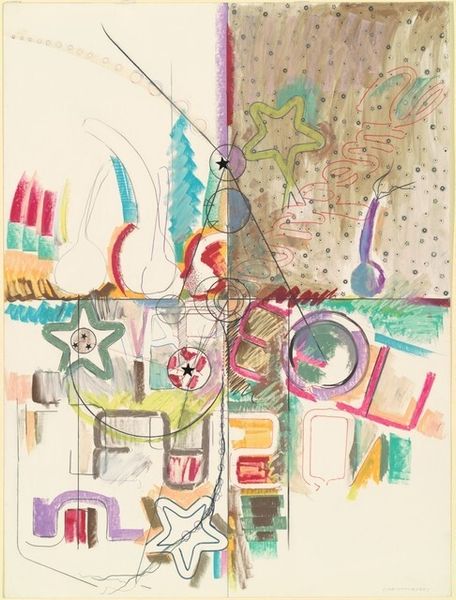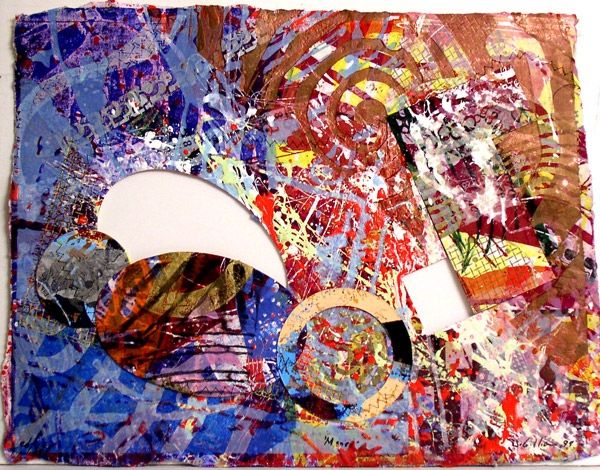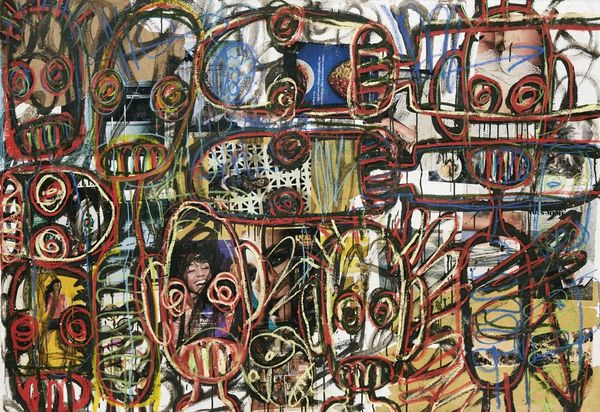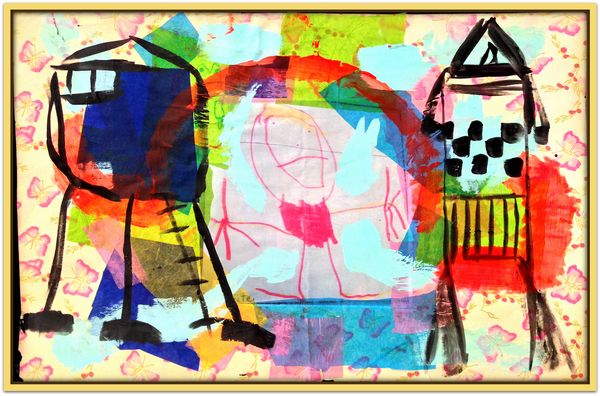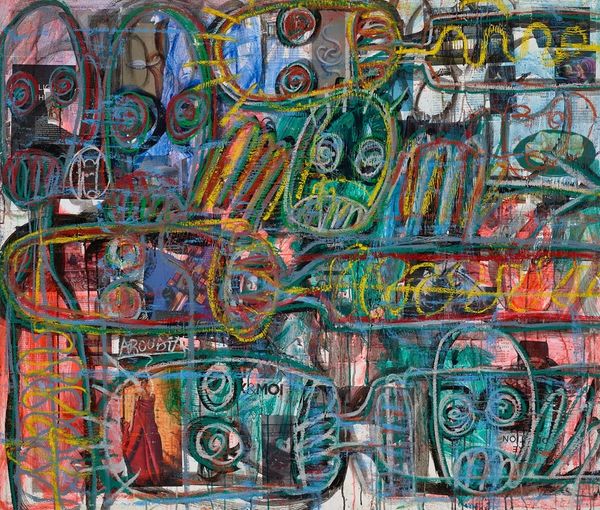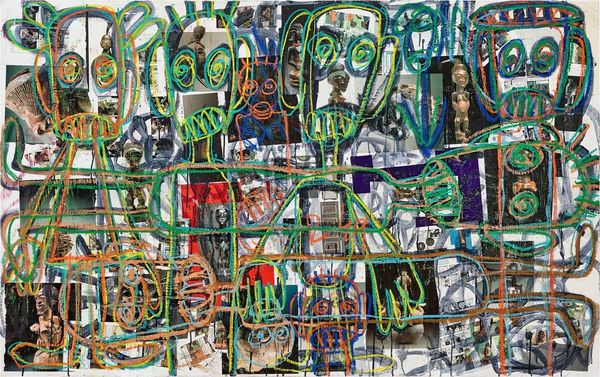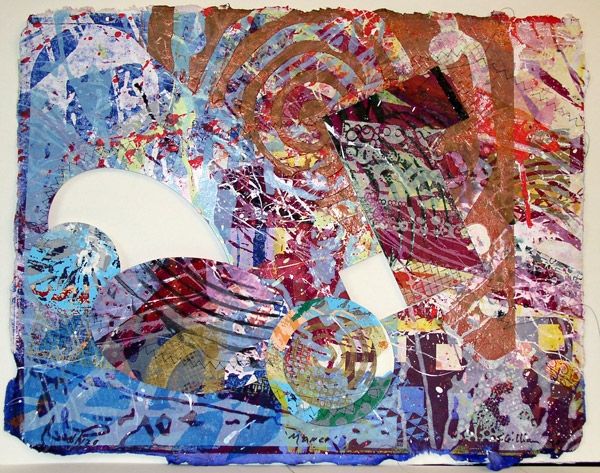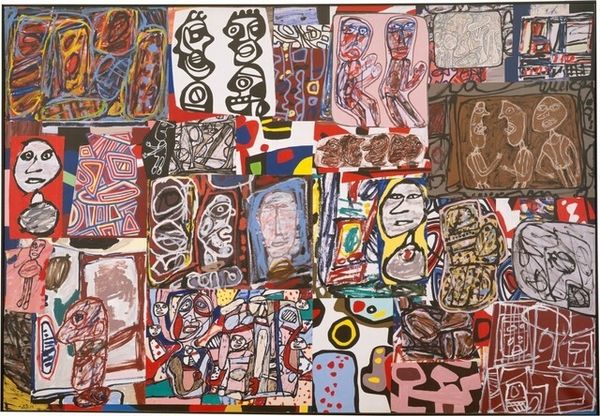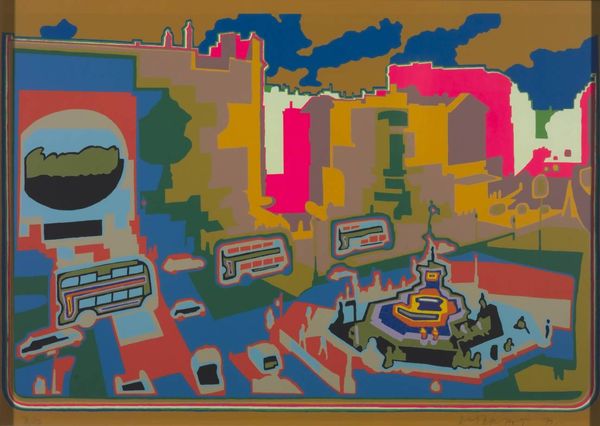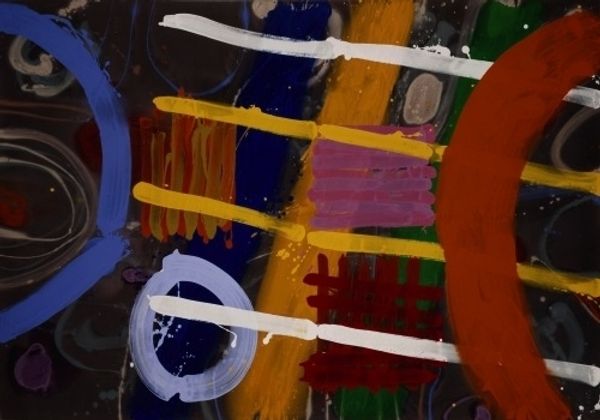
970 Who Has Eaten All My Windows 1996
0:00
0:00
friedensreichhundertwasser
KunstHausWien, Vienna, Austria
Copyright: NAMIDA AG, Glarus (displayed with the permission of Hundertwasser Non-Profit Foundation) The displayed work of art is protected under the copyright law. In particular, it is not permitted to reproduce, to alter, to print or to publish these works of art. Violations will be prosecuted according to civil and criminal law.
Editor: So, here we have Friedensreich Hundertwasser's "970 Who Has Eaten All My Windows," a mixed-media piece created in 1996. The colors are really striking and the shapes are... well, they’re something else. It almost feels like looking at a city through a distorted lens. What strikes you most about it? Curator: Immediately, I'm drawn to the materiality. It's not just paint; it's tempera, applied in a way that denies any attempt at perfect representation. Consider Hundertwasser's artistic context, the late 20th century: mass production, consumerism... This deliberately "imperfect" application and these raw materials directly challenge those industrialized values, don’t you think? Editor: I see what you mean. It's like a deliberate rejection of the slickness of consumer culture. The buildings almost look handmade, childlike even. Curator: Precisely. Think about what that "naïve" aesthetic implies. It positions art-making not as the domain of the elite, but accessible, almost a form of folk art. And these windows...what about them? Are they uniform? Do they signify something deeper than mere architectural details? Editor: No, they are all so unique! Each like a little portrait, even. Maybe representing the individuality that is being lost? Curator: An intriguing idea! And what about the spiral form dominating the composition? Think about its potential symbolic relation to labor, craft and construction itself. Is Hundertwasser suggesting a return to older forms of production through his playful engagement with materiality? Editor: That's fascinating. I hadn’t considered the spiral in that context, but it makes a lot of sense when thinking about craftsmanship. Thank you for shining a new light on this piece! Curator: My pleasure. Reflecting on the materials and processes gives us a different understanding of what this work means in our lives.
Comments
No comments
Be the first to comment and join the conversation on the ultimate creative platform.

